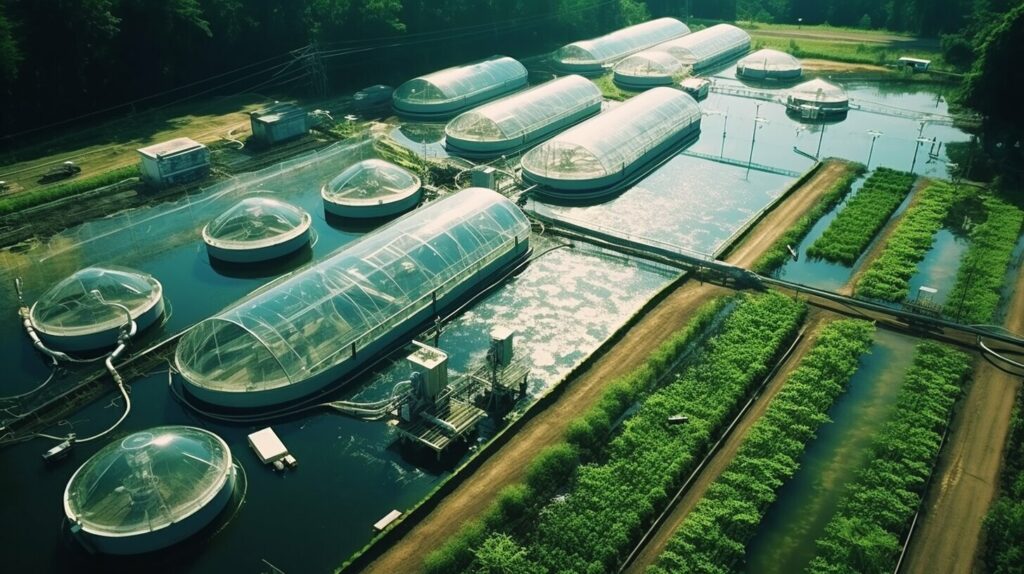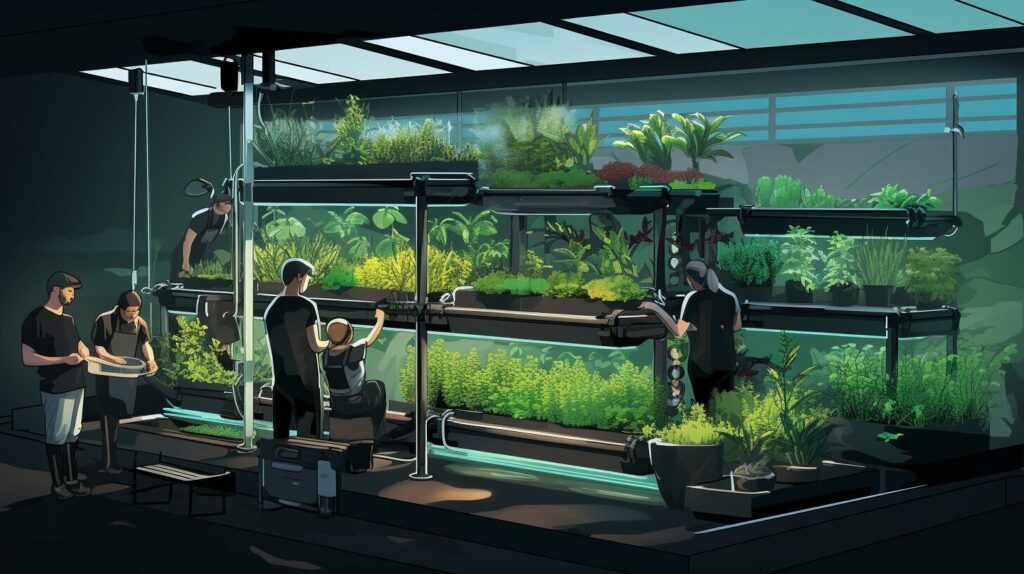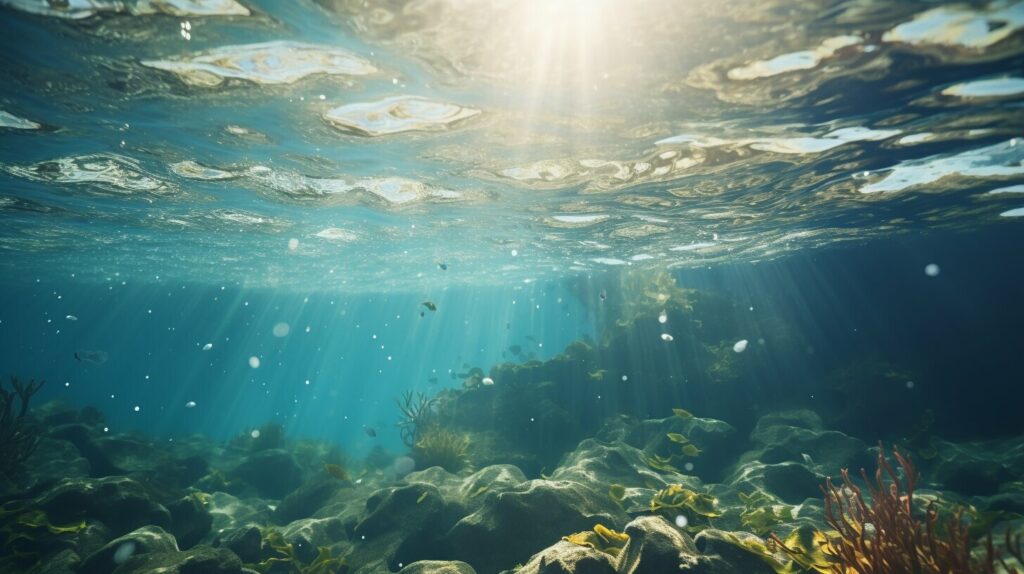This post may contain affiliate links and we may earn a small commission when you click on the links at no additional cost to you. As an Amazon Affiliate, we earn from qualifying purchases. You can read our full disclaimer here.
Suppose you’re considering setting up an aquaponics system. In that case, you’re likely aware of the many benefits this sustainable method of food production offers. Not only does aquaponics require less space and water than traditional farming, but it also allows for the cultivation of both fish and plants in a symbiotic ecosystem that maximizes efficiency.
However, designing an aquaponics system that is both efficient and productive can be a challenging endeavor. With so many variables to consider, it’s easy to get overwhelmed by the complexity of the process.
That’s why it’s essential to understand the best practices for efficient aquaponics system design. Following these principles, you can optimize your system for maximum output while minimizing waste and maintaining a healthy ecosystem.
Key Takeaways:
- Efficient aquaponics system design is crucial for maximizing yields and sustainability.
- Best practices for aquaponics system design provide guidance on optimizing components such as water circulation, filtration, and feeding strategies.
- Selecting appropriate fish and plant species, monitoring water parameters, and managing pests and diseases are also key factors to consider.
Understanding Efficient Aquaponics System Design Principles
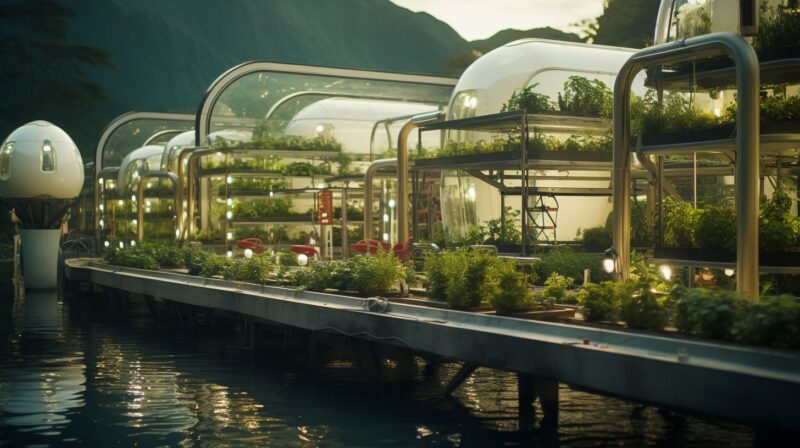
Before diving into the intricate details of aquaponics system design, it’s essential to understand how these systems work. An aquaponics system has two primary elements: fish and plants. The waste from fish is broken down into nutrients by bacteria and microorganisms. These nutrients, in turn, are absorbed by the plants, which use them as food to grow and thrive.
The key to an efficient aquaponics system design is balance and integration. The fish and plants must be harmonized, with their needs and outputs appropriately managed. This means the system must be designed with the right components and parameters to maintain the balance.
| Aquaponics Design Principles | Description |
|---|---|
| Optimal Water Quality | The water quality in an aquaponics system is critical to the health and growth of fish and plants. Maintaining optimal pH, dissolved oxygen, and nutrient concentrations is essential. |
| Proper System Sizing | The size of the system should be appropriate for the number and size of fish and plants being raised. Overcrowding can lead to a buildup of waste and cause stress on the fish and plants. |
| Appropriate Fish and Plant Selection | Choosing the right fish and plant species can significantly impact the system’s success. The species should be compatible with each other and the system’s environment. |
| Efficient Water Circulation | The water in the system needs to be adequately circulated to ensure that the nutrients are evenly distributed. This can be achieved through various methods, such as pumps, airlifts, or gravity-fed systems. |
By following these aquaponics design principles, you can ensure your system is optimized for efficiency and productivity. Understanding the basics of the system and its components is the first step toward designing a successful aquaponics system.
Choosing the Right Aquaponics System Configuration
When designing your aquaponics system, selecting the proper configuration is crucial to achieving optimal efficiency. Your structure will significantly impact the fish and plants you can grow and the resources required to maintain the system.
Aquaponics systems include deep water culture (DWC), media beds, and nutrient film technique (NFT). Each has its pros and cons. When deciding on the most appropriate configuration, it’s essential to consider your specific needs.
| Aquaponics Configuration | Pros | Cons |
|---|---|---|
| Media Beds | Low initial cost | May require more maintenance |
| NFT | Higher yield potential | More complex setup |
| DWC | Good for large-scale systems | Higher initial cost |
Media beds are popular for beginners due to their low initial cost and ease of use. However, they may require more maintenance than other configurations. NFT systems suit those who want higher yield potential but need a more complex setup. DWC systems are ideal for large-scale operations but involve a higher initial cost.
To choose the suitable system configuration for your aquaponics system, consider factors such as the size of your operation, the available space, and budget. You can maximize efficiency and yield by choosing the best design for your aquaponics system.
Optimizing Water Circulation and Filtration
Efficient water circulation and filtration are essential components of effective aquaponics system design. Proper water flow is necessary to maintain a healthy and thriving ecosystem for plants and fish. In addition, an effective filtration system is required to remove waste and other harmful particles that can accumulate in the water.
Ensuring Proper Water Flow
The first step in optimizing water circulation is appropriately ensuring water flows through the system. This can be achieved using pumps to move the water through various components, including the fish tank, grow bed, and filtration system. Ensuring the water flow is consistent and evenly distributed throughout the system is important.
| Tip: | Use appropriately sized pumps and plumbing to ensure proper water flow in your aquaponics system. |
|---|
Adequate Aeration
Adequate aeration is crucial for the health of fish and plants in an aquaponics system. This can be achieved by adding airstones or other aerators to the fish tank and grow bed. Aeration helps to increase dissolved oxygen levels in the water, which is necessary for the survival of fish and beneficial bacteria.
| Tip: | Monitor your water’s dissolved oxygen levels regularly and adjust your aeration system accordingly. |
|---|
Implementing Effective Filtration
An effective filtration system is necessary to remove waste products, excess nutrients, and other harmful particles from the water. Several types of filtration systems can be used in aquaponics, including mechanical, biological, and chemical.
Each type of filtration system has advantages and disadvantages, and selecting the appropriate approach depends on several factors, such as the size of your system and the specific needs of your fish and plants.
| Tip: | Regularly clean and maintain your filtration system to ensure it is functioning optimally. |
|---|
By optimizing water circulation and filtration, you can ensure a healthy and efficient aquaponics system. This will result in greater yields and a more sustainable operation.
Selecting Suitable Fish and Plant Species
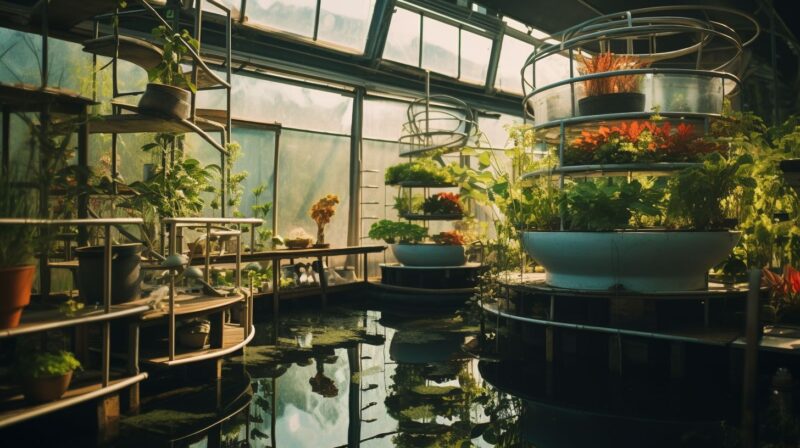
In aquaponics, the choice of fish and plants is critical to the success of your system. You can achieve an efficient, balanced, and sustainable system by selecting the suitable species. Here are some factors to consider when choosing fish and plants:
Temperature Tolerance
Ensure that your chosen fish and plants can tolerate the temperature range of your system. Some species are more sensitive to temperature fluctuations than others. For example, tilapia and catfish are warm-water species, while trout and salmon prefer cooler temperatures.
Nutrient Requirements
Choose plants that have similar nutrient requirements to your chosen fish species. This will ensure that the nutrients produced by the fish are utilized effectively by the plants. An instance of this would be that leafy greens such as lettuce and spinach flourish in an environment rich in nutrients. In contrast, fruiting plants, such as tomatoes and peppers, require higher levels of potassium and phosphorus.
Growth Rates
Choose fish and plants with similar growth rates to avoid imbalances in the system. Fast-growing fish, such as tilapia, require plants that can keep up with their nutrient demands, such as watercress and duckweed. Slow-growing fish, such as trout, can be paired with slower-growing plants, such as herbs and leafy greens.
Compatibility
Choose fish and plants that are compatible with each other. Some fish species may nibble on plant roots or leaves, while others may produce toxic waste to certain plants. On the other hand, some plant species may provide hiding places or natural food sources for certain fish species.
By considering these factors and researching specific fish and plant species, you can select the right combination for your aquaponics system. This will help ensure a healthy and efficient system that produces high-quality fish and plants.
Monitoring and Maintaining Optimal Water Parameters
To ensure the health and growth of your fish and plants, it’s crucial to regularly monitor and maintain optimal water parameters in your aquaponics system.
pH Levels: Aim for a pH range between 6.8 and 7.2, which is optimal for fish and plant growth. Measure the pH levels using a testing kit and adjust with pH-up or pH-down solutions as needed.
Ammonia and Nitrate Concentrations: Regularly test for ammonia and nitrate levels, which should be kept in a safe range for your fish. Ammonia levels should be below 0.25 mg/L, while nitrate levels should be below 40 mg/L. Consider adding more plants or adjusting feeding practices if levels are too high.
Temperature: Maintain a constant temperature between 72°F to 78°F in your system. Use a thermometer to regularly check the temperature and adjust if necessary to avoid stressing your fish and plants.
Regularly monitoring and maintaining these water parameters is crucial for the health and success of your aquaponics system.
Implementing Efficient Feeding Strategies
Feeding your fish is essential to running an aquaponics system, but did you know that you can optimize your feeding practices for even greater efficiency? Following these aquaponics best practices ensures your fish gets the proper nutrients while minimizing waste and maximizing plant growth.
Feed Your Fish Responsibly
One of the biggest mistakes aquaponic gardeners make is overfeeding their fish. While giving your fish as much food as they will eat may be tempting, excess feeding can lead to poor water quality, slow plant growth, and even fish deaths. Instead, feed your fish small, frequent meals throughout the day, giving them only what they can consume in a few minutes.
Another important consideration is the type of fish food you use. Look for high-quality fish food that is specifically formulated for aquaponics systems. These foods are designed to provide the right balance of nutrients for your fish and your plants, ensuring that all components of your system work together efficiently.
Minimize Waste
When fish food is not consumed, it can lead to excess waste in your system. This waste can contribute to poor water quality and slow nutrient cycling. To minimize waste, consider using a feeding tray or platform that allows uneaten food to be easily removed. You can also use a floating feeding ring to keep food contained in one area, preventing it from spreading throughout your system.
Optimize Nutrient Cycling
In addition to providing proper nutrients for your fish, your feeding practices can impact nutrient cycling in your aquaponics system. By feeding your fish at the correct times and in the right amounts, you can help ensure that the nutrients from fish waste are being effectively absorbed by your plants. This can lead to faster plant growth and a more efficient system overall.
By following these aquaponics best practices for feeding your fish, you can optimize the nutrient cycling process in your system, reduce waste, and promote healthy plant growth. Remember to provide your fish small, frequent meals using high-quality fish food, minimize waste, and optimize nutrient cycling by feeding at the correct times and in the right amounts.
Managing Pests and Diseases in Aquaponics

Like any agricultural system, pests and diseases can harm fish and plant productivity in aquaponics. However, with proper management strategies, you can prevent and mitigate the impact of these challenges and maintain an efficient aquaponics system.
Creating a Balanced Ecosystem
One of the most crucial steps in preventing pest and disease outbreaks is creating a balanced ecosystem in your aquaponics system. This means ensuring that the fish and plants are in harmony and that their nutrient requirements are adequately met. When the system is in balance, the fish can produce waste that contains the necessary nutrients for plant growth, and the plants can absorb these nutrients and purify the water for the fish.
Implementing Proper Hygiene Practices
Maintaining proper hygiene practices is another essential aspect of pest and disease management in aquaponics. This includes regularly cleaning and sanitizing the equipment, controlling the accumulation of debris and waste, and avoiding introducing external contaminants. You should also avoid overfeeding the fish, as excess food can accumulate and become a breeding ground for harmful bacteria and pests.
Utilizing Natural Pest Control Methods
While chemical pesticides and antibiotics can effectively control pests and diseases, they can also harm the fish and beneficial bacteria in the system and compromise sustainability. Instead, you can utilize natural pest control methods that are safer and more eco-friendly. For example, you can introduce predatory insects or fish that can feed on the pests, use physical barriers to prevent their entry or apply organic treatments such as neem oil or soap sprays.
Early Detection and Prompt Actions
Finally, early detection and prompt actions are critical in minimizing the impact of pests and diseases in aquaponics. Regularly monitoring the fish and plants for signs of distress or abnormal behavior can help you identify potential issues before they escalate. If you notice any problems, immediately remove the affected plants or fish, adjust the water parameters, or apply appropriate treatments.
By following these best practices in managing pests and diseases in aquaponics, you can create a sustainable and efficient system that provides healthy produce and fish while minimizing the risks of environmental harm and economic losses.
Conclusion
Designing an efficient aquaponics system requires careful consideration of several critical factors, including system configuration, water circulation and filtration, fish and plant selection, and monitoring of water parameters. Incorporating best practices and principles can help you achieve optimal yields and sustainable operations.
Remember to maintain balance and integration in your system and regularly monitor and maintain optimal water parameters. Implement efficient feeding strategies and take measures to prevent and manage pests and diseases. Following these guidelines can create a thriving aquaponics system that produces high-quality fish and vegetables.
The potential of aquaponics is vast, and with the right design and management, you can reap the benefits of this innovative and sustainable approach to agriculture. Use the principles and best practices outlined in this article to guide your aquaponics system design and operation and unlock your system’s full potential.

